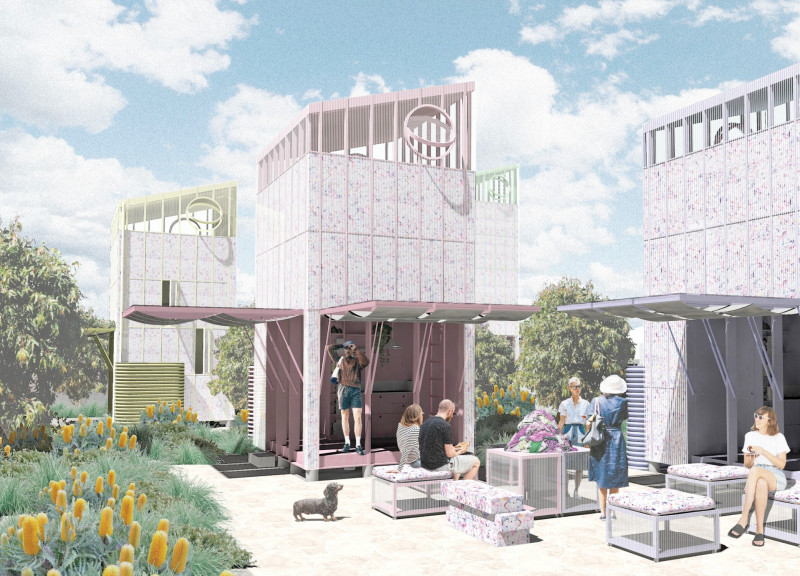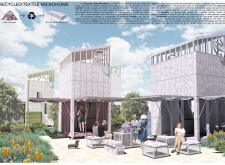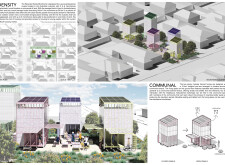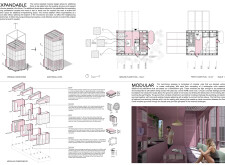5 key facts about this project
### Overview and Context
Located in urban Australia, the Recycled Textile Microhome project addresses pressing challenges of urban density, sustainability, and housing affordability. Targeted towards young professional couples, the initiative utilizes textile waste, particularly from the fast fashion industry, to create building materials that promote responsible living. The design reflects a contemporary microhome typology, emphasizing flexibility and fostering community interaction within a constrained urban environment.
### Spatial Efficiency and Interaction
The architectural composition consists of modular, vertical stacks designed to maximize space efficiency while encouraging communal engagement. Each microhome measures approximately 12.4 square meters (134 square feet) and features operable wall panels that enhance the relationship between indoor and outdoor spaces, allowing residents to customize their living environments. Ground-level communal terraces serve dual purposes: facilitating social interactions among residents and offering educational opportunities related to sustainable living practices.
### Sustainable Material Use and Environmental Impact
The project employs a variety of sustainable materials, notably recycled textile insulation panels derived from used clothing, which contribute to environmental awareness and waste reduction. Additional materials include recycled polycarbonate panels composed of 50% recycled content, sustainable timber frames, and innovative uses of recycled seatbelt nets.
Aiming to minimize environmental impact, the microhome includes photovoltaic panels for solar energy generation and rainwater tanks to promote water reuse. This design strategy is projected to reduce greenhouse gas emissions by approximately 6.2 metric tonnes per unit, reflecting a commitment to sustainable construction and resource management in contemporary urban settings.






















































